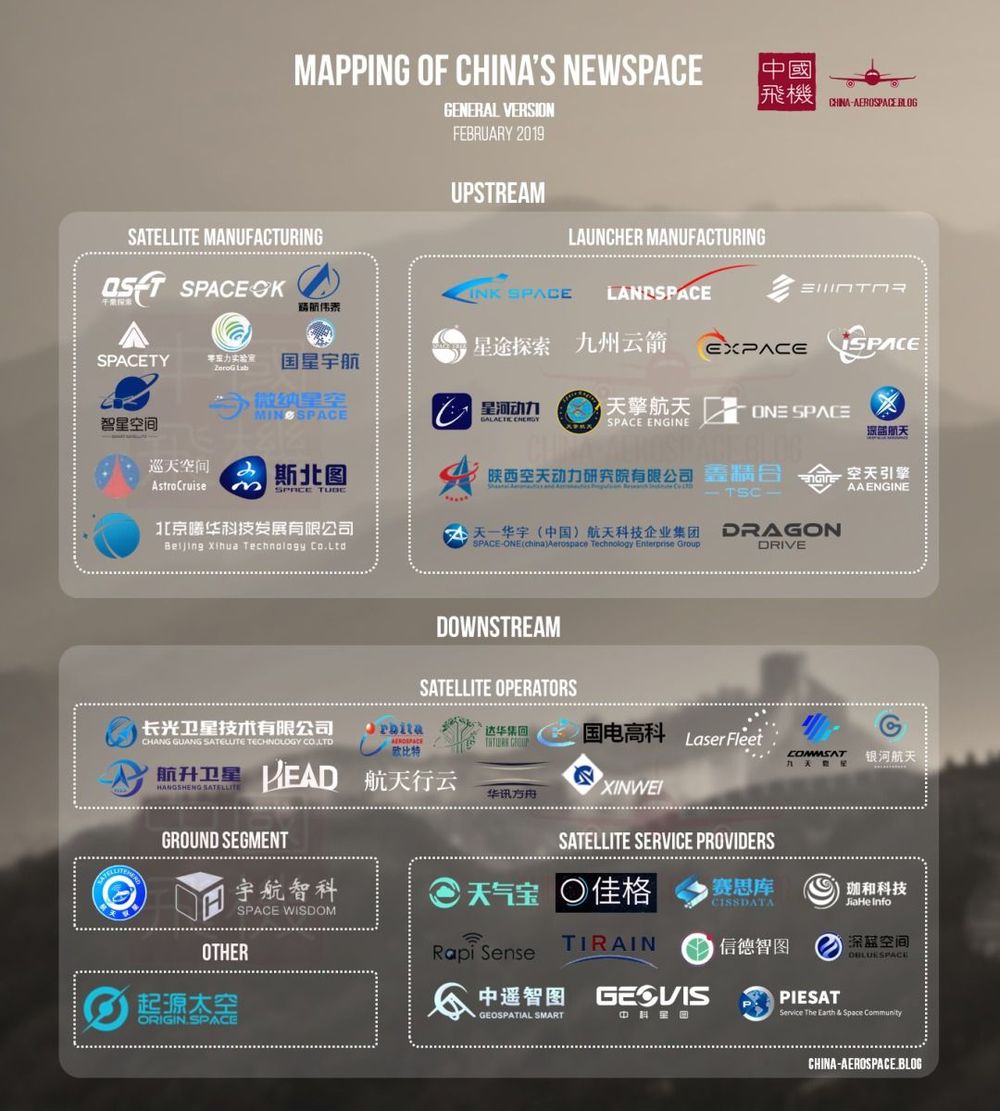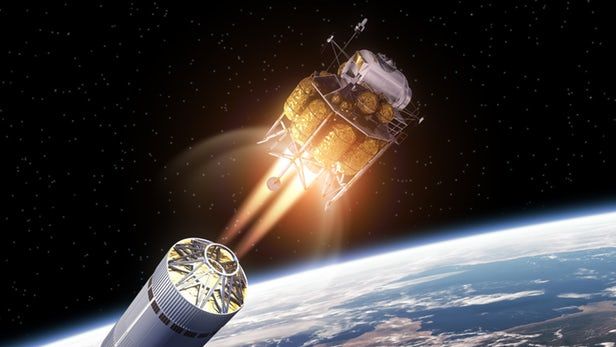Page 9293
Apr 8, 2019
Two rival AI approaches combine to let machines learn about the world like a child
Posted by Genevieve Klien in category: robotics/AI
Together, deep learning and symbolic reasoning create a program that learns in a remarkably humanlike way.
Apr 8, 2019
British engineers complete test of their new high-speed ‘spaceplane’
Posted by Tracy R. Atkins in category: space travel
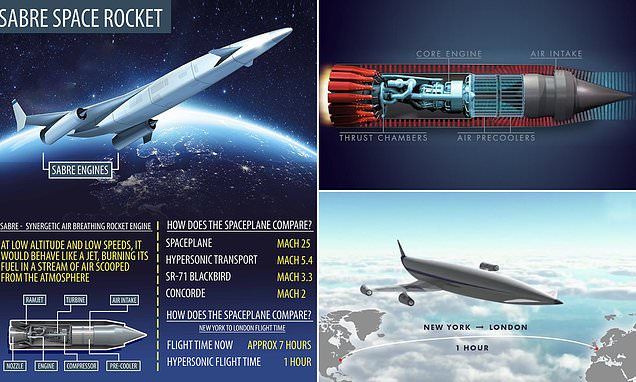
Reaction Engines, which is based in Oxfordshire, has tested their new pre-cooler’ technology — which allows aircraft to travel faster than ever with a Sabre engine designed to take planes into orbit.
Apr 8, 2019
China’s NewSpace: Mapping of its 60+ Start-ups
Posted by Klaus Baldauf in categories: finance, mapping, space
Chinese space has been a very hot topic in recent years. Other than the impressive space exploration missions (Tiangong, Chang’e…), the interest for China is also due to the recent opening up of this industry to private investments, which has led to a leap in the number of space start-ups. These start-ups, supported by venture capital heavy-weights are covering the entire space industrial chain: launchers, satellite platforms, satellite subsystems, satellite services, ground segment, etc.
The number of space start-ups on the other hand, is a debated question. Chen Lan estimated in November 2018 that there were over 100 Chinese space start-ups [1]. FutureAerospace, a Beijing-based think-tank, sets the number at around 60, at the same period [2]. Other space watchers have suggested 80 such as in [3]. However, how this count is made is rarely detailed (how do we define a “NewSpace company”?), and very few lists are available at the time of writing, if any. Up to now, only Disrupt Space, a start-up which plans to build a global space entrepreneurial community, has undertaken the establishment of a list, which sets the count at 35 Chinese space start-ups (see map below).
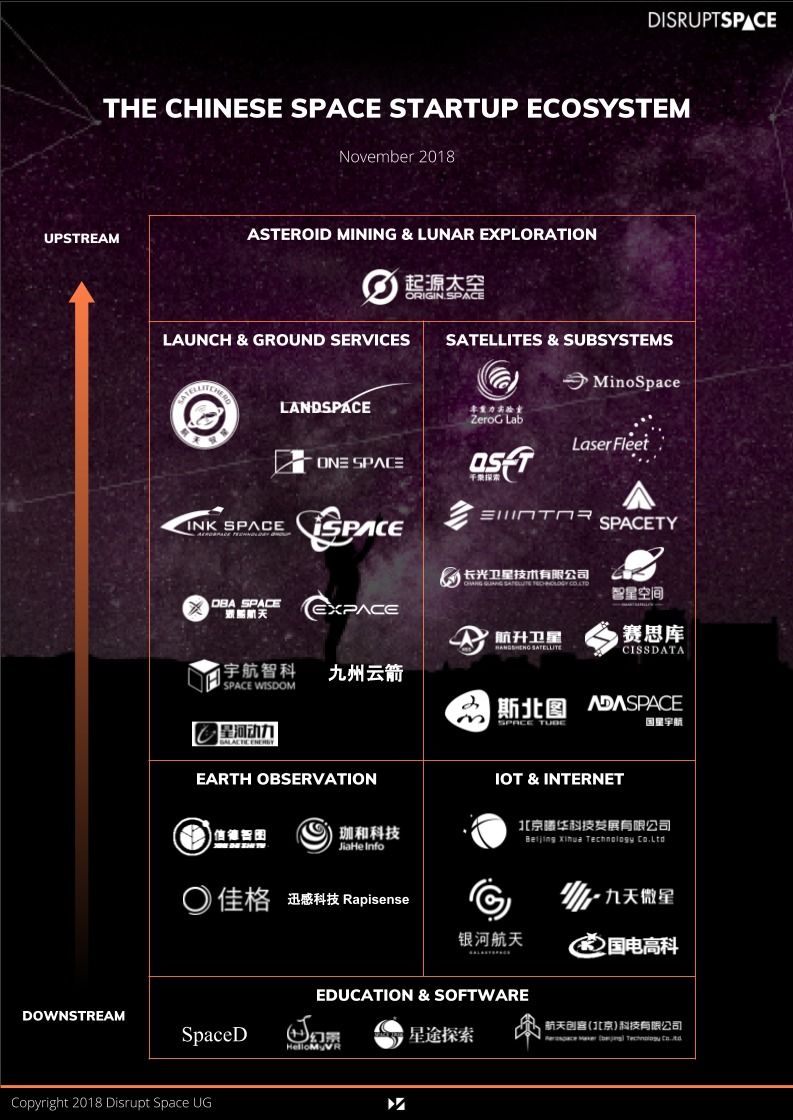
Fig. 1 – Disrupt Space’s Chinese Space Start-up Mapping in November 2018 [4]
Continue reading “China’s NewSpace: Mapping of its 60+ Start-ups” »
Apr 8, 2019
MOF-based alternative could make for safer, cleaner rocket fuel
Posted by Klaus Baldauf in category: energy
Hydrazine rocket fuel is highly toxic, carcinogenic and unstable, making it incredibly dangerous to work with. Scientists at McGill believe their new alternative, based on metal-organic frameworks, will lead to cleaner, safer, more controllable rockets.
Apr 7, 2019
Forever young: study uncovers protein that keeps skin youthful
Posted by Paul Battista in category: life extension
Beauty might only be skin deep, but for those wondering how to keep that skin young, scientists may have found an answer in the form of a protein that encourages cell competition.
The prosaically named COL17A1 might not sound like a fountain of youth, but the new study suggests it does the heavy lifting when it comes to keeping skin intact and unimpaired.
The protein works by encouraging cell competition, a key process to maintain tissue fitness. That effectively “drives out” weaker cells while encouraging replication of stronger ones.
Continue reading “Forever young: study uncovers protein that keeps skin youthful” »
Fresh interview with Aubrey de Grey
What is ageing? We can define ageing as a process of accumulation of the damage which is just a side-effect of normal metabolism. While researchers still poorly understand how metabolic processes cause damage accumulation, and how accumulated damage causes pathology, the damage itself — the structural difference between old tissue and young tissue — is categorized and understood pretty well. By repairing damage and restoring the previous undamaged — young — state of an organism, we can really rejuvenate it! It sounds very promising, and so it is. And for some types of damage (for example, for senescent cells) it is already proved to work!
Today in our virtual studio, somewhere between cold, rainy Saint-Petersburg and warm, sunny Mountain View, we meet Aubrey de Grey, again! For those of you who are not familiar with him, here is a brief introduction.
Apr 7, 2019
My full interview on LONDON REAL Podcast
Posted by Paul Battista in category: neuroscience
Apr 7, 2019
500,000 Pieces of Space Junk Are Traveling at 17,500 MPH Around Earth [VIDEOS]
Posted by Victoria Generao in categories: space, transportation
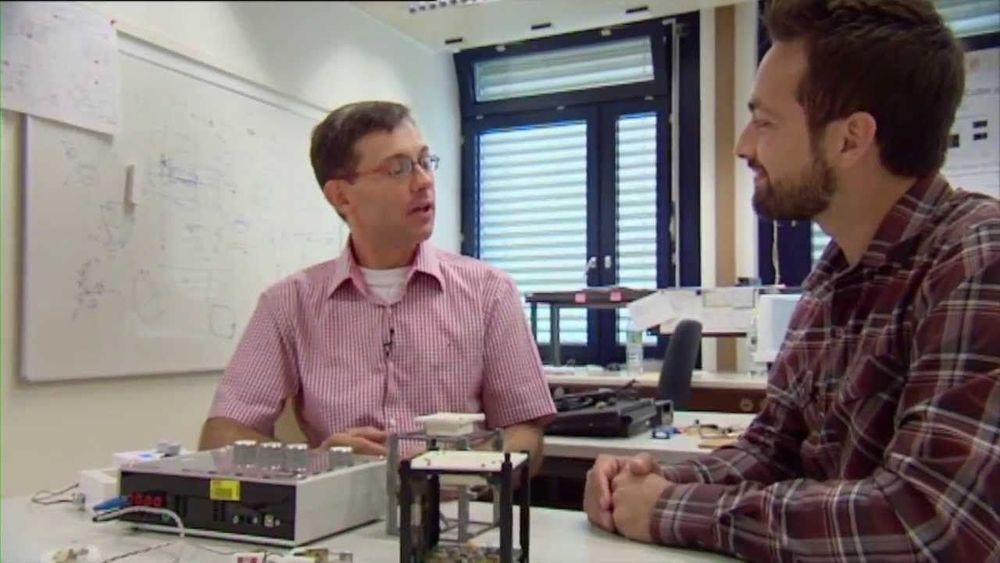
More than 500,000 pieces of debris, or “space junk,” are tracked as they orbit the Earth. They all travel at speeds up to 17,500 mph, fast enough for a relatively small piece of orbital debris to damage a satellite or a spacecraft. If that sounds dangerous, that’s because it it is. The rising population of space debris increases the potential danger to all space vehicles, but especially to the International Space Station, space shuttles and manned spacecraft. NASA takes the threat of collisions with space debris seriously and has a long-standing set of guidelines on how to deal with each potential collision threat.
Apr 7, 2019
Video Games Predict Soldiers of the Future: The All-Seeing, Indomitable, Walking Tank
Posted by B.J. Murphy in categories: entertainment, military
Want to imagine the soldier of the future? A look at video game super-soldiers gives you an ideal glimpse of the desired improvements.
As a US Army military veteran and a longtime gamer, I can attest that while being a soldier and playing one in a video game are very different experiences, there exist several functional overlaps in the goals and tools provided to achieve objectives.
For example, examine the differences and similarities between playing basic training in a game like America’s Army, and enduring an actual enlistment. America’s Army is designed to teach prospective soldiers what to expect both in training and actual combat. While the game version does not nearly prepare a player for the physical and psychological demands of actual basic training and participating in what Army operations entail, it does give an understanding of the objectives one would be expected to accomplish while in service and some of tools available to achieve those goals.


